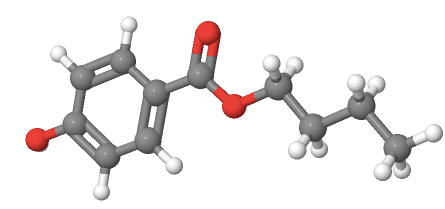Criteria

General criteria for obtaining AllergyCertified certification
If you want your products to be AllergyCertified you must be aware that there are specific chemicals which are never allowed.
These are ingredients which are allergenic like perfume, and specific preservatives such as Methylisothiazolinone and Formaldehyde and its donors. Below is a list of the not allowed and allowed chemicals.
Chemicals not allowed
Chemicals classified with these H- sentences are generally not allowed in AllergyCertified products unless the chemical is used in a specific product or in such low concentration that the SCCS and/or our advisory board assess it as safe.
Sensitizing skin effect:
H310 Fatal in contact with skin.
H311 Toxic in contact with skin.
H312 Harmful in contact with skin.
H314 Causes severe skin burns and eye damage.
H317 May cause an allergic skin reaction.
Cancer:
H350 May cause cancer.
H351 Suspected of causing cancer.
Reproduction:
H360 May damage fertility or the unborn child.
H361 Suspected of damaging fertility or the unborn child.
Skin irritation:
H315 Causes skin irritation – depending on the type of product (leave on, rinse off and the used concentration).
All kinds of perfume – synthetic and natural
Whether it is synthetic or natural all perfumes, fragrances, essential oils and aroma are not allowed.
This includes: Alpha isomethylionone, Amyl cinnamal, Amylcinnamyl alcohol, Anise alcohol, Benzyl alcohol, Benzyl benzoate, Benzyl cinnamate, Benzyl salicylate, Butylphenyl methylpropional, Cinnamal, Cinnamyl alcohol, Citral, Citronellol, Coumarin, Limonene, Eugenol, Evernia Furfuraceae (træmosekstrakt), Evernia prunastri (egemosekstrakt), Farnesol, Geraniol, Hydroxycitronellal, Isoeugenol, Hexyl cinnamal, Hydroxyisohexyl 3-cyclohexene carboxaldehyde, Linalool, Methyl 2-octynoate
Formaldehyd and Formaldehyde donors:
Benzylhemiformal 2-bromo-2-nitropropane-1,3-diol 5-bromo-5-nitro-1,3-dioxane Diazolidinyl urea DMDM hydantoin Imidazolidinyl urea Methenamine Paraformaldehyd Sodium hydroxymethylglycinate Quaternium-15
Other preservatives
Methylisothiazolinone (MI).
Methylchloroisothiazolinone (MCI).
Kathon MI/MCI.
Plants from the Compositae or Asteraceae family
Examples on allergenic plant from this family could be: Chamomille retutica and Calendula.
Some colorants
Some colorants can contain nickel or other allergenic metals. For these ingredients we need documentation that the level of the metal in the product is safe (NOAEL) for consumers who have already been sensitized to the nickel (the metal)
Acrylates – some specific acrylates such as Methaacrylate are not allowed. If the acrylate is an impurity in another chemical we an only allowed if there is a NOAEL value and the impurity is below this value.
Chemicals allowed
Preservatives:
(Some are depended on concentration)
Benzoic acid.
Dehydroacetic Acid.
Ethylhexylglycerin.
Ethylparaben.
Methylparaben.
Phenoxyethanol.
Potassium Sorbate.
Sodium Benzoate.
Sorbic Acid.
Oils:
(for some of the oils we do need documentation for purity)
Aloe Barbadensis (depending on the level of Antraquinone).
Butyrospermum Parkii Butter.
Brassica Campestris Oleifera.
Borago Officinalis Seed Oil.
Brassica Oleracea Italia.
Brassica Napus Seed Oil.
Elaesis Guineensis Oil/Elaesis Guineensis kernel Oil.
Hydrogenated Canola Oil.
Olus Oil.
Olea Europaea Oil.
Prunus Amydalus Dulcis Oil.
Prunus Armeniaca Kernel Oil.
Persea Gratissima Ricinus Communis Oil.
Simmondsia Chinensis Seed Oil.
If you want to use an oil thats not on the list, then you can give us the INCI name and CAS number and we will find out if it has allergenic potential or not.
Since Contact Dermatitis can depend on the concentration of the chemicals that we get exposed to, we need the exact concentration of the ingredient in order to do our assessment.

